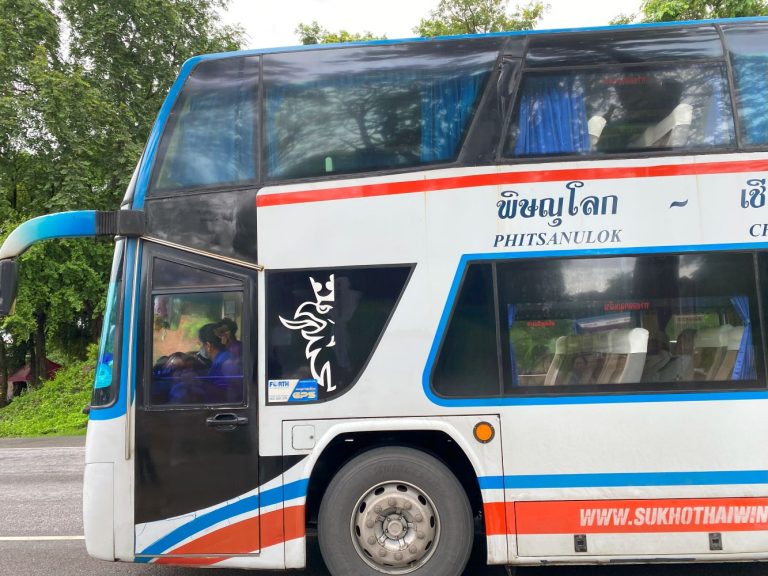Blessings at Naritasan Shinsho-ji
After a somewhat better sleep (jet lag is a killer), I took the hotel shuttle over to the local train station. It was even more crowded than the day before: wall-to-wall crammed with people.
I wasn’t expecting this many tourists in what’s supposed to be the shoulder season! The shuttle buses are tiny, standard city bus size and not the larger airport shuttle versions, so once more than 10 people get on it got pretty full.
The shuttle to the train station was ABSOLUTELY PACKED and I was so glad the trip was only about 10 minutes long. Even with a small 27l backpack as my main bag, I felt a bit like a sardine stuffed into a tin.
Just Gone Wandering is supported by readers! This post contains affiliate links. If you click on a link and buy something, I get a small percentage at no extra cost to you. Your support helps keep this blog running— thank you! Read full disclosure here.
Narita Station
There are actually two stations here: JR Narita Station and Keisei-Narita Station. They’re run by two different train companies (Japan Railway and Keisei Electric Railway), but both have similar routes and schedules.
If you have a JR train pass, you’d probably stick to the JR train stations. I didn’t get a pass so I just went with whatever was fastest/cheapest/etc. which ended up being Keisei this time.
Both stations are surrounded by restaurants and convenience stores which is super helpful as I needed to grab some more food. I also needed to stash my luggage, and was happy to find these lockers right in the JR station entrance.
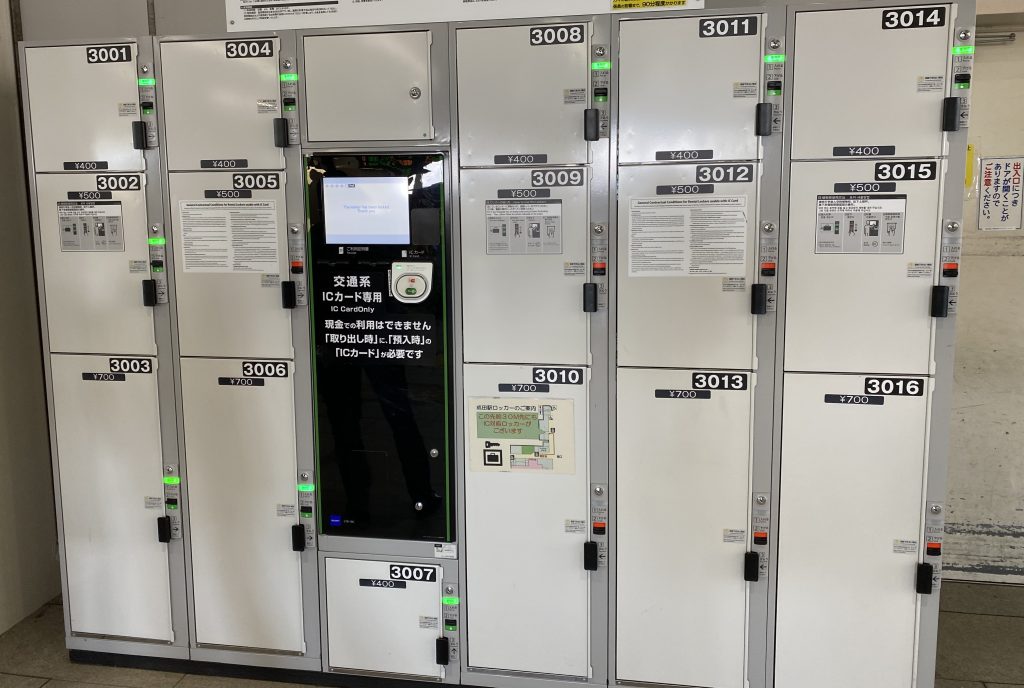
As far as I can tell, all train stations in have coin lockers (or local businesses have storage options nearby you can use) which makes it very easy to just drop off a bag and go sightseeing. Since I only had a backpack, I was able to stuff it into a locker for ¥500 / $3.80 USD and leave it there all day.
The largest size locker might fit a carry-on suitcase, and the medium ones a carry-on side backpack (if not too stuffed). The smallest ones will fit a day pack.
I probably could’ve fit it into the smallest size, but since it was only ¥100 difference I don’t suppose it mattered much. These lockers are nice because you can pay using an IC card, including a Suica or Pasmo card loaded onto your phone’s digital wallet.
🌟 I recommend grabbing the Moshi Moshi eSIM from Airalo for your trip to Japan. New users, use promo code NEWTOAIRALO15 to save 15%. Existing users, user promo code AIRALOESIM10 to save 10%!
Eki stamp
My newest obsession: the eki stamp.
These are souvenir rubber ink stamps located at train stations (that’s the “eki” part) that feature little pictures representing the station and/or the surrounding area. They’re free to get, you just need something to stamp them onto. If you’re hardcore, you can buy a special eki stamp notebook from certain bookstores, but otherwise any regular notebook will do.
Places other than train stations also have stamps, such as castles, museums, parks, visitor centers, highway rest stops, etc. etc. (but not Tokyo Disneyland). You can really go nuts trying to get them, especially if you’re prone to collecting things like I am.

These’d be great to stamp into your travel journal. I ended up using a small notebook dedicated just to stamps, as I’m doing my regular journaling here on the computer.
More info about eki stamps: Kulture Kween, The Backpack Adventures, Otimusya (JP)
Naritasan Shinsho-ji
Walking from the station to the shrine is ~15 minutes at a leisurely pace. On the way there I went into Naritasan Omotesando, a shopping street full of little stores selling traditional Japanese things like dried fish, geta sandals, and lots of cat statues.
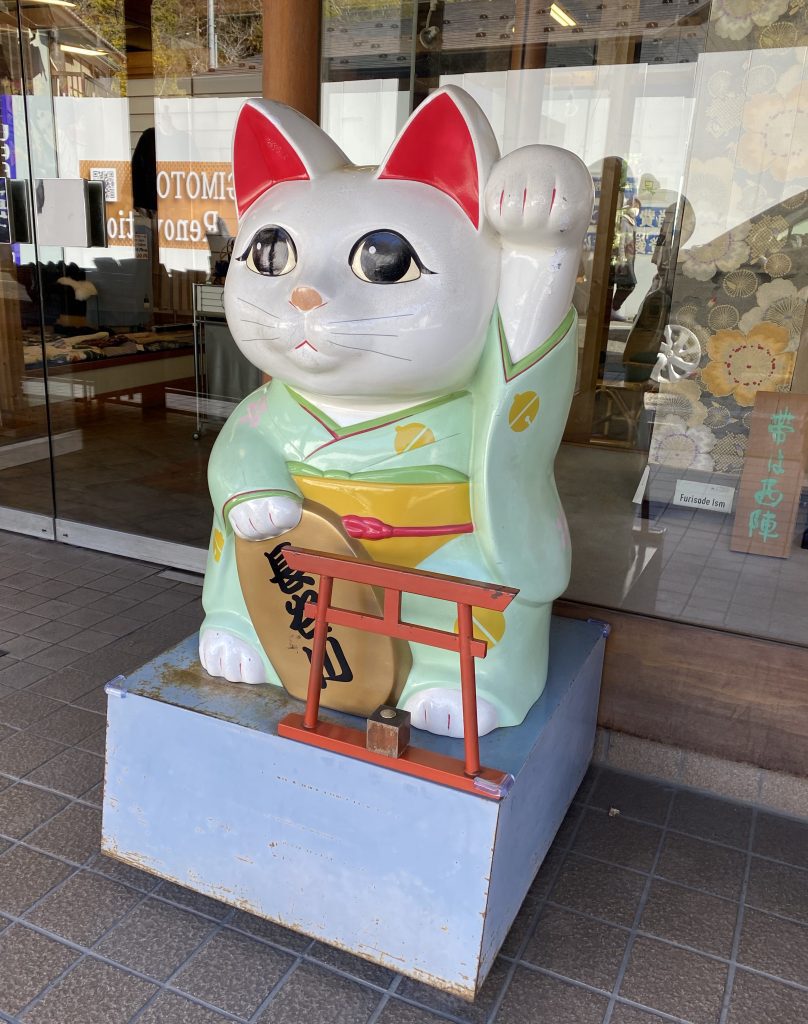
It wasn’t very crowded yet even though I only managed to get there around noon, but by the time I came back through a few hours it was VERY crowded. I did have a lot of fun watching the other tourists as we wended our way up to the shrine.
The shrine
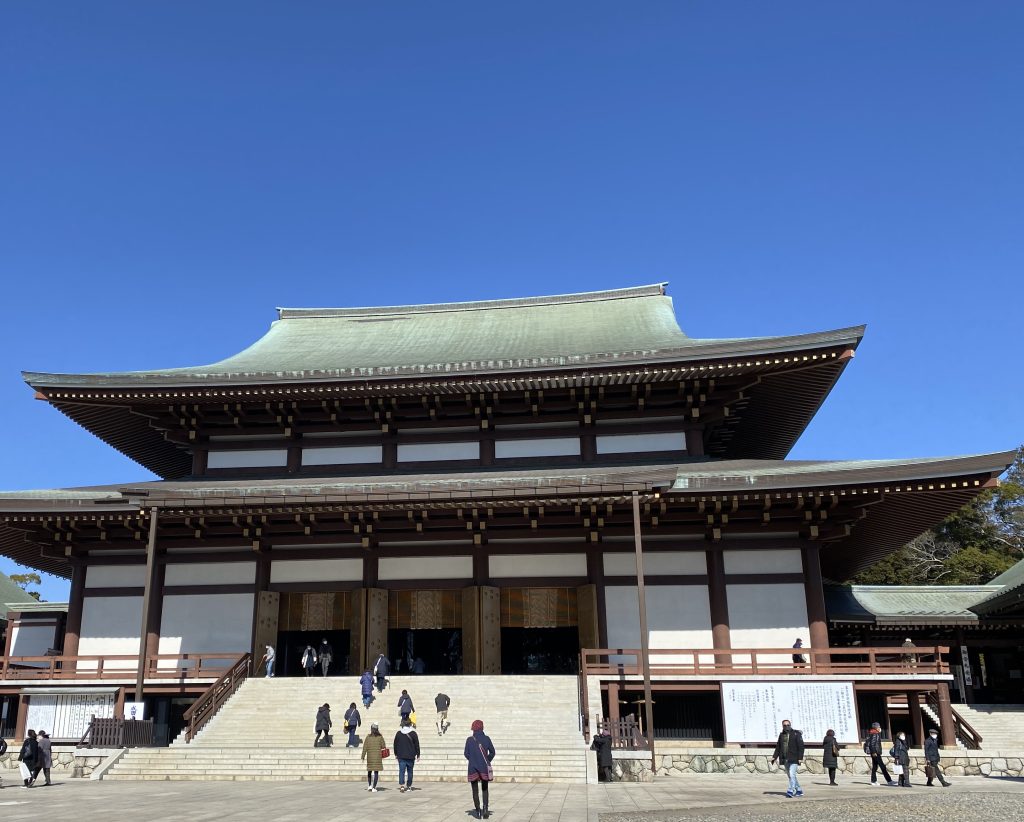
My first Japanese shrine! Woohoo!
First shrines are special, especially since you eventually get tired of visiting them on a long trip. (I got tired of visiting churches in Western Europe as well.) I specifically picked this temple not only because it was close to the train station, but also because it’s slightly off the major tourist path as most people tend to stick to Tokyo proper.
Naritasan Shinsho-ji Temple is a Buddhist temple originally founded in 940 to commemorate a victory over a revolt led by a local samurai. It’s dedicated to Fudō myōō (“Unmovable Wisdom King”), who is associated with fire rituals. Lots of the events and festivals hosted at Naritasan therefor involve fire in some way.
Getting up to the main part of the shrine meant lots of steep stairs, but there are elevators and ramps as well. Other modern things: bathrooms (with heated toilet seats), speakers for announcements and ambient music, paved roads, etc. Actually, many of the main buildings were built in the last 40 years, so overall it’s a relatively modern shrine.
Shrine rituals
I’d looked up what to do when visiting a shrine, so when I ran into an incense pot, I remembered the procedure.
Basically, you put a pinch of incense into the burner and then waft the smoke over yourself, and say a short prayer. It’s supposed to be a cleansing/healing/good luck sort of thing, so I figured it’d be good to do at the start of a long trip.

I grabbed a fortune (with translation in English) and it was a so-so one, neither good luck nor bad luck. A good start to the trip, I suppose– at least it wasn’t a bad fortune.
Then, suddenly, as I stared at the fortune wondering what to do next, I heard loud chanting and drum noises started coming out from the Great Main Hall!
It was a Goma Fire Ritual! At the time I had no idea what was going on, but I knew I wanted to be involved somehow. So I took my shoes off and went in to observe.
Chanting, drums, fire!
It was very intense, and very cool to experience.
My section of the floor was invited to come up and give our bags to the monks, who waved them over the sacred fire. Maybe that blessing boosted my iffy fortune towards the good side. 😛
Just accidentally running into the goma fire ritual was a special moment and I felt very lucky to have done it so early into my trip. That said, they’re regularly scheduled, about 4-5 times a day. The schedule should be located at one of the info booths near the entrance if you’d like to watch it yourself.
Naritasan Park
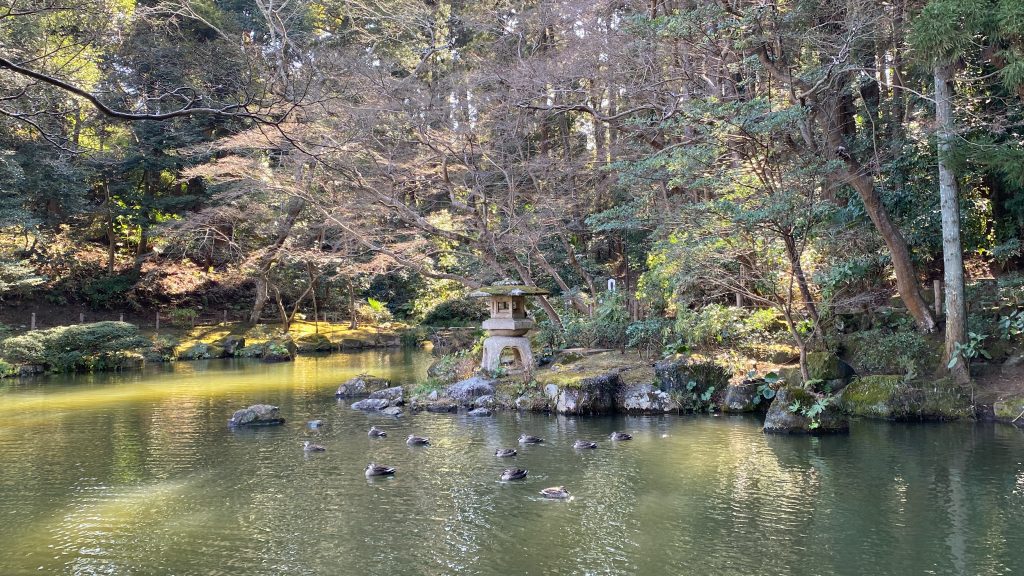
After the ceremony ended, I went into the park area, mostly to look for a Geocache but also just to enjoy the beautiful scenery. No cherry blossoms yet, but the plum trees started putting blossoms out and there were plenty of fish and ducks roaming around the little water areas. It was very peaceful, and not too crowded (though I did run into some Arabic-speaking tourists taking selfies in front of a pond, haha!).
I even found a cemetery at one corner of the grounds.
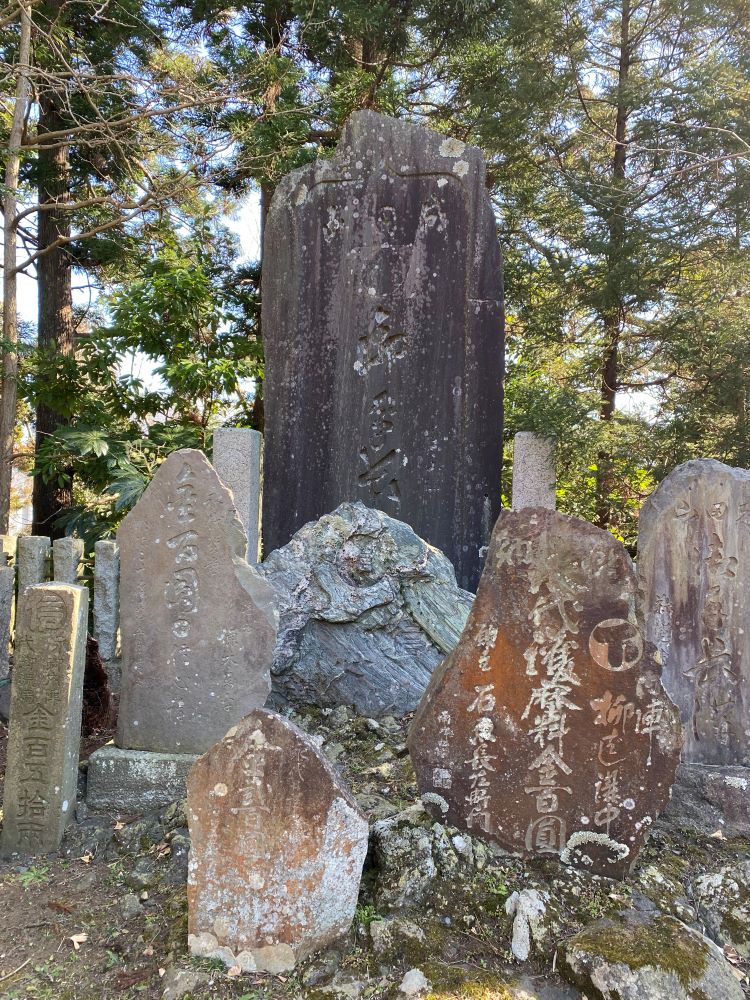
Back to the station
I took a slightly different route and saw some other shops as well as a residential area. It was very quiet, and it was interesting seeing a non-touristy part of the city. The buildings reminded me of the 1980s for some reason…not the concrete post-Cold War kinda thing, but definitely a pre-fabricated style.
Apparently it’s typical for older buildings (20-30 years) to be torn down and replaced with newer ones, and they aren’t meant to last longer than that. New buildings are built from pre-fab designs, so I wonder if the ones I saw were actually from the early 2000s but just in an “older” pre-fab style.
Near the train station, I found a sweet potato vending machine, two for ¥300. This was very exciting because I’d seen videos about Japanese sweet potatoes for months and really wanted to try one.
However, the potatoes came out of the vending machine cold. Disappointing! But my hostel had a microwave so I decided to take it with me and heat it up there.
See also: some of my favorite vending machine drinks I found in Japan.
Meanwhile, I was starving and really wanted something hot to eat, so I looked for a restaurant.
I found a noodle place inside the station (which doesn’t seem to be on Google Maps) which had a machine to order on, perfect for us folks who get nervous trying to order food in a foreign language. I got hot udon with a potato croquette. It showed up in maybe 3 minutes; fantastic!
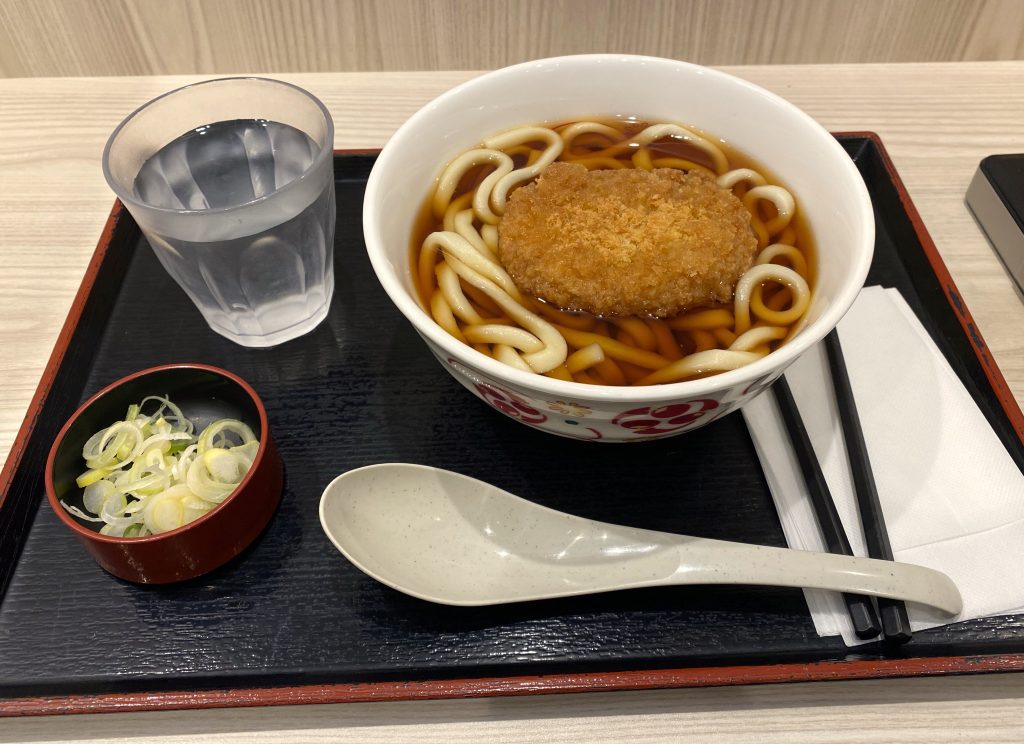
Unfortunately, I hadn’t practiced using chopsticks before I left the US. I was grateful my table faced a wall and not another person, because I struggled a LOT.
The actual meal was…just okay. I found the broth very salty and the croquette fell apart because I wasn’t fast enough eating it (whoops). The noodles were good, though.
Afterwards I grabbed my backpack from the locker and walked over to Keisei-Narita station, to grab a train into Tokyo proper.
In Tokyo!
There are a few different way to get to Tokyo from Narita, but the cheapest ones are by train. Even within that there’s different price points (the most expensive being the Skyliner from the airport), but I took the Keisei Rapid Limited Express for ¥849 / $6.46 USD. It got to Tokyo in about an hour, which is typical for how far outside of the main part of the city I started in.
My hostel was right near that station so I just needed to walk about 5 minutes after making my way out of the station.
Ueno station is big, but not overwhelmingly large like Tokyo or Harajuku station. Google Maps had good directions for finding the right exit, and all I had to do was follow the signs.
Of course, before I left the station I got another eki stamp.

Guesthouse toco (hostel)
I’d booked a few nights at Guesthouse toco on the recommendation of someone in a Facebook travel group. The guesthouse is in a 100+ year old building, with a bar on the bottom floor of one building and the rooms in an adjacent building behind it. It’s in a slightly more residential area set back from main streets, so it’s very quiet.
I booked a bunk in the female dorm room, with shared facilities and a kitchen. I paid ¥17,600 / $124.81 USD for 4 nights, not terrible for a hostel in a major city (especially compared to what I was paying for European hostels last fall). Each bed has curtain (nice), a large-ish locker, and a plug by the bed. Managed to snag the bottom bunk, which I appreciate more and more as I get older and older. 😛
Here’s a short video of the female dorm room and nearest toilet:
They also have a mixed dorm and a few private rooms.
The shared facilities were clean, though there were only maybe two showers for the whole hostel. The kitchen had a microwave, two induction cookers, large fridge, and hot water kettle. Also lots of pots and spices/oils/tea etc. They also had a very nice garden at the back, though it was too cold really to go sit outside.
The only thing of note was the floors were VERY cold, even through the provided slippers. The room itself was heated, but the rest of the house was cold. To be expected, I suppose, since it’s such an older building.
Shopping
I’d brought what I THOUGHT was plenty of warm clothes with me, but my Southern California ass can’t handle anything below 50* and it was going to be in the high 30s for the next week.
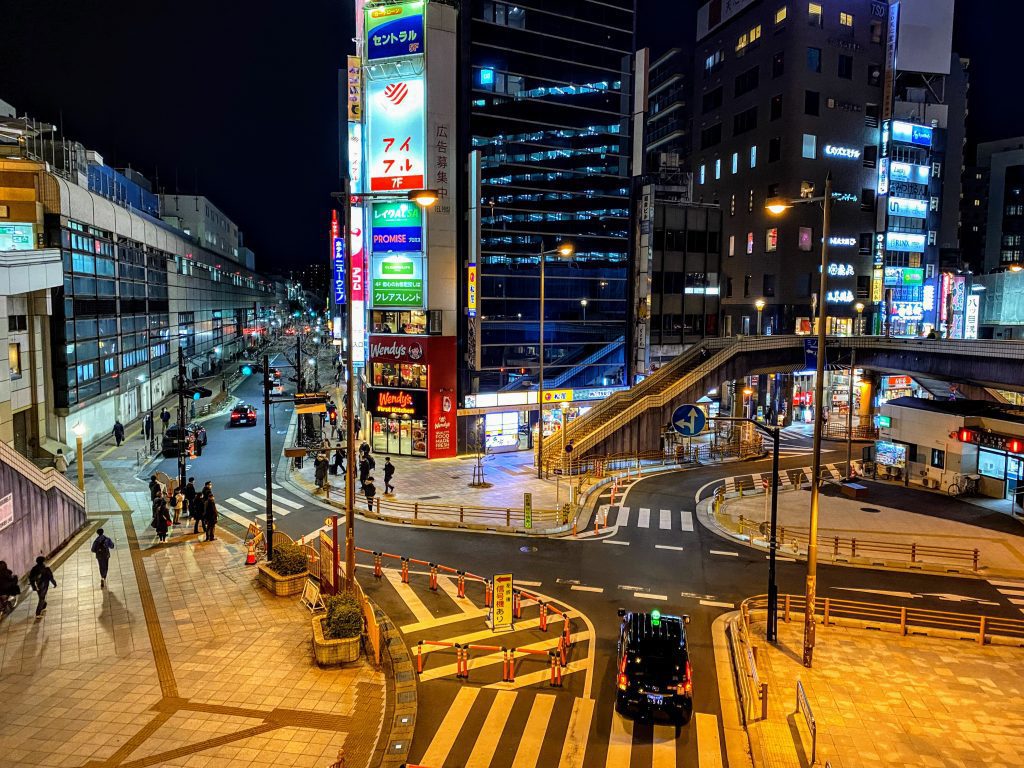
So I made a pilgrimage to Uniqlo, where they have plenty of “heat tech” clothes at decent prices. Got a bit lost trying to navigate there and ended up going further to a different location, but it worked out as I got to see a bit of the area and a nearby shopping center.
Grabbed a few foodstuffs from a Family Mart, including Yukimi Daifuku ice cream, which I’d seen online. It’s SO GOOD, basically a bite of ice cream wrapped inside a thin layer of mochi. Highly recommend trying it; they have several flavors, but vanilla is probably the best.
Previous Entry
Next Entry
Explore More
More adventures in Japan:
- Budget Guide to Japan
- Tokyo Convenience Store Prices
- Tokyo Travel Budget (Long Stay)
- Overnight Trip to Nagoya from Osaka
- From Fukuoka to Busan by ferry (JR Queen Beetle)
Best Travel Resources
- 👩💻Stay organized with the Deluxe Travel Planner Spreadsheet
- 🛌Search Hostelworld for budget stays
- ✈️Search SkyScanner for discounted flights around the world
- 😺Join TrustedHousesitters and do petsitting in exchange for accommodation
- 💳Carry Chase Sapphire Preferred for a travel-friendly credit card
- 📱Use Airalo for eSIMs around the world
- 🚙Check DiscoverCars for international car rentals
- 👩💻Snag ExpressVPN to stay safe while browsing the web
- 🧑⚕️Sign up with VisitorsCoverage for trip insurance





